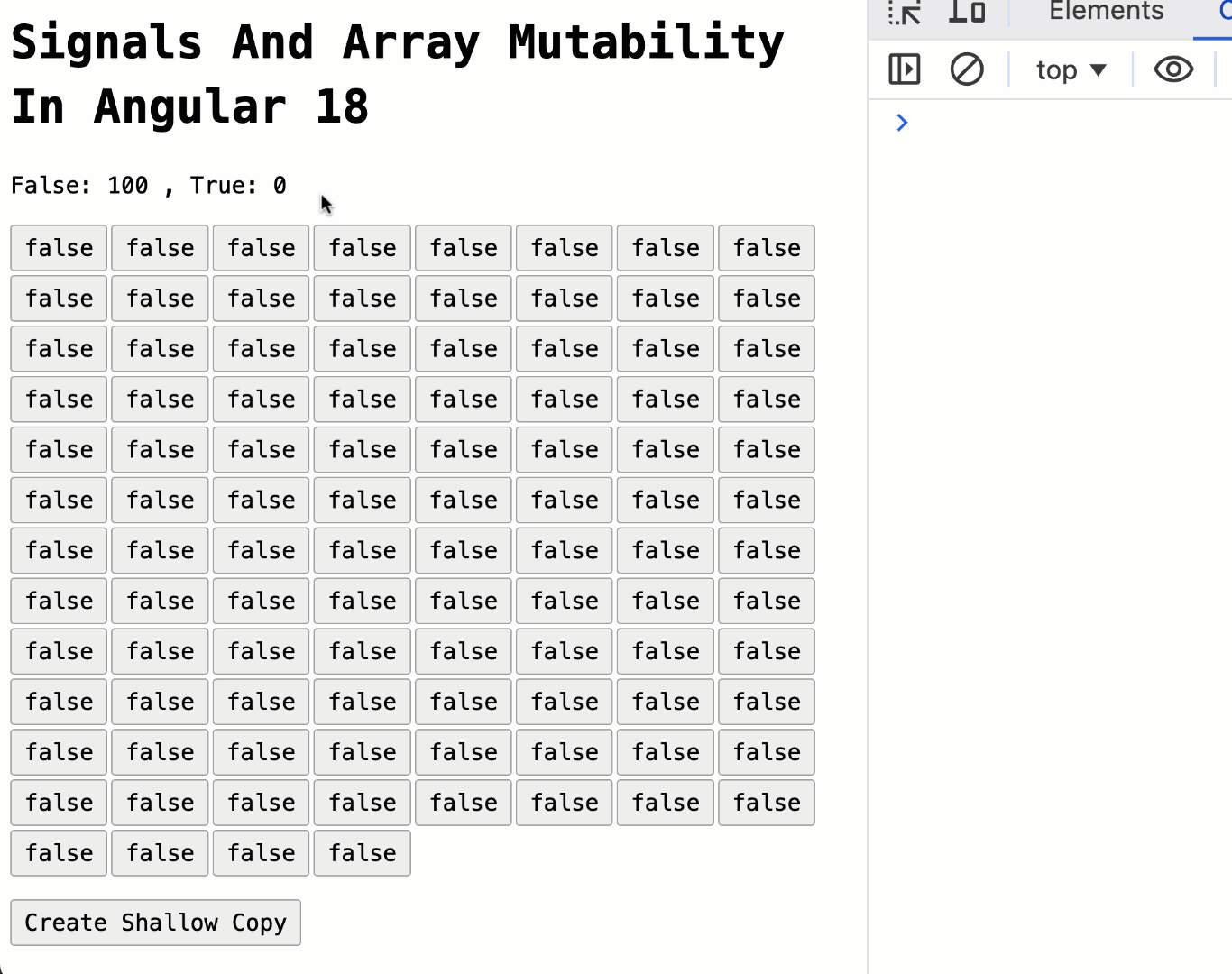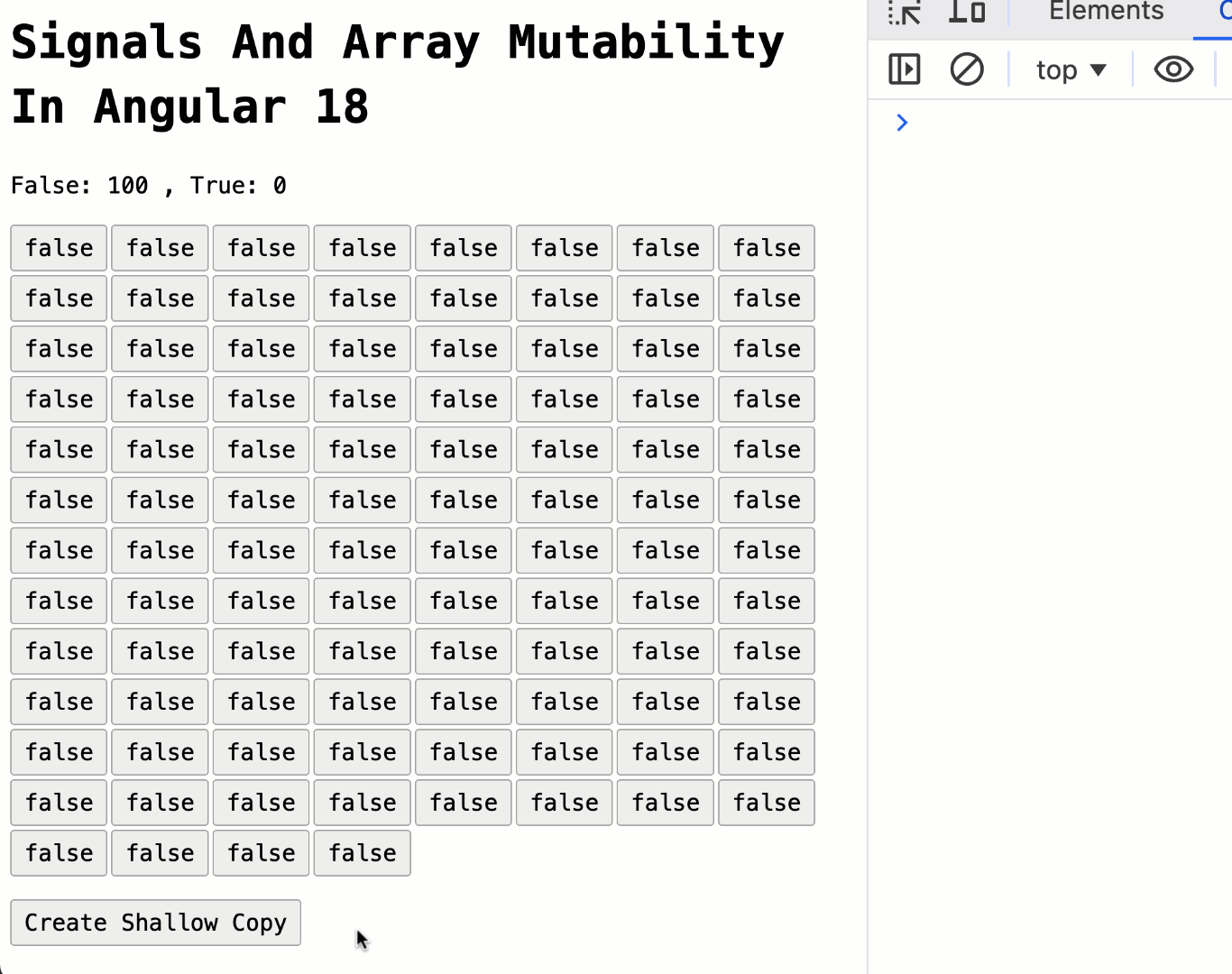Signals And Array Mutability In Angular 18
Like many change detection mechanisms, Signals in Angular 18 rely on reference changes in order to trigger change detection. When consuming simple values, this is fine because simple values are passed by value, not by reference. But, when wrapping complex objects in a Signal, the mutability of objects becomes a point of consideration. It's important to understand how the change detection mechanisms in Angular work so that you don't end up falling down the immutability rabbit-hole.
Run this demo in my JavaScript Demos project on GitHub.
View this code in my JavaScript Demos project on GitHub.
From its inception, the magic of Angular has always been that it "just works". You change a value in your view-model and your Angular view automatically updates. No wresting with immutability; no explicit calls to a setState() function; just simple, seamless, and straightforward change detection.
Of course, if your view rendering gets very complicated, "simple, seamless, and straightforward" can sometimes come with a performance penalty. In such cases, strategies like OnPush change detection and Signals can help narrow the surface area of reactivity.
But, it's important to understand that one strategy does not wholly replace another. Even if you use Signals and OnPush change detection, Angular is still going to perform some automatic change detection for you. And, embracing that—instead of fighting it—can save you from succumbing to the folly that all data should be immutable.
Aside: In extreme performance edge cases, you can use the
ChangeDetectorRefto remove an entire component from the change detection tree such that Angular won't perform any automatic change detection at all. Most people will never need this.
To explore the nuance of change detection in Angular 18, I've created a component that lists 100 buttons that can be toggled on. Some important points about this component:
It uses
OnPushchange detection. This means that asynchronous actions, like HTTP calls,setTimeout(), andsetInterval(), won't automatically trigger change detection of the component's internal view.It wraps the array of buttons in a Signal.
It has two computed Signals that count the number of buttons that are currently off (
false) or on (true).The user can manually toggle buttons on.
Let's look at the code. First, the definition of the component with its OnPush change detection strategy and its public view-model (truncated):
interface Entry {
value: boolean;
}
@Component({
standalone: true,
changeDetection: ChangeDetectionStrategy.OnPush
})
export class AppComponent {
public entries = signal<Entry[]>( this.buildEntries( 100 ) );
public falseCount = computed( () => this.computeCount( false ) );
public trueCount = computed( () => this.computeCount( true ) );
}
By default, every value in the entries collection will be false. And, each computed Signal contains the count of the number of buttons in the relevant state (false or true).
The user can manually toggle a value at a given index using the (click) handler:
@Component({ ... })
export class AppComponent {
/**
* I set the given entry to false.
*/
public toggle( index: number ) {
// Note: We are mutating the array directly without changing the Signal reference.
// As such, this won't trigger any downstream computing of other Signals; but,
// since this method was triggered via a user interaction within the component, it
// will trigger change detection.
this.entries()[ index ].value = true;
}
}
And, every one second we're going to randomly change one of the values to true by defining a setInterval() in the ngOnInit() life-cycle method:
@Component({ ... })
export class AppComponent {
/**
* I get called once after the inputs have been bound for the first time.
*/
public ngOnInit() {
// Every second, we're going to randomly flip one of the values deep within the
// entries. However, since this component uses OnPush change detection, the
// setTimeout() won't trigger change detection and no reconciliation will happen.
setInterval(
() => {
var index = Math.floor( this.entries().length * Math.random() );
this.entries()[ index ].value = true;
console.log( "Flipping index:", index );
},
1000
);
}
}
In both of these cases, notice that we're changing the state of the entries array without changing the Signal object reference (ie, we're not creating a new array). However, in the first case, the change is being triggered by a user interaction within the view (a click); as such, Angular will trigger automatic change-detection. And, in the second case, the change is being triggered by an external interval; as such, Angular will not trigger any automatic change detection.
Here's the HTML view for the component:
<p>
False: {{ falseCount() }} ,
True: {{ trueCount() }}
</p>
<p class="toggles">
@for ( entry of entries() ; track $index ) {
<button
(click)="toggle( $index )"
[class.truthy]="entry.value">
{{ entry.value }}
</button>
}
</p>
<p>
<button (click)="shallowCopy()">
Create Shallow Copy
</button>
</p>
Notice that we're mixing-and-matching our reference types within the view. Some of the reference are values wrapped in Signals: falseCount(), trueCount(), and entries(); and, some of the references are directive value references: entry, $index, and entry.value. Each of these reference types is managed slightly differently by Angular.
Now, let's run this Angular 18 application and click on a few buttons:
There are several important things to notice in the above GIF:
When the
setInterval()callback toggles a button, the view does not update. This is because theOnPushnature of the component won't respond to changes outside of the component.When I toggle one of the buttons manually, not only does the targeted button change, all of the buttons updated by the
setInterval()are also re-rendered to the correct state. This is because a user-interaction, performed within the bounds of the component view, trigger change-detection on that view. This means that everyentry.valueand[class.truthy]expression is reconciled, regardless of how or when it was set.No matter what I do, the
falseCount()and thetrueCount()computed Signals are never updated. This is because I never change the actual reference to theentriescollection; which, in turn, means that the computed values are never recomputed.
At the bottom of the view, there's a button that can change the entries collection by creating a shallow copy:
@Component({ ... })
export class AppComponent {
/**
* I perform a shallow copy of the entries collection (updating the Signal reference).
*/
public shallowCopy() {
this.entries.update( entries => entries.slice() );
}
}
Now, if I let the setInterval() run for a few seconds and then create a shallow copy, you'll see that the computed Signals are updated:
When I create a shallow copy of the entries() collection, I'm changing the internal object reference of the Signal. This gets Angular to call the compute callbacks for the falseCount() and trueCount() Signals. On top of that, since the shallow copy was triggered by a click within the view, this also triggered the automatic change-detection, which updated the rendering of the individual button states.
Change Detection Is Nuanced
You get automatic change detection from Angular whether you want it or not (unless you explicitly detach the View). So, it's not a question of choosing one or the other—it's a question of which change detection mechanism provides the right set of trade-offs in a given component context.
In this particular demo, I purposefully added mechanisms that would fail due to the direct mutation of the entries array. However, if I didn't have a setInterval() or computed values, the direct mutation of the array wouldn't have been an issue at all. There's nothing inherently wrong with mutable data; and, in the vast majority of cases, performance isn't a problem.
Want to use code from this post? Check out the license.



Reader Comments
With zone completely removed (ie some future angular version), I wonder if user interaction will also NOT trigger a change detection cycle?
If so, then cloning the object that the signal exposes will then be needed in this scenario as well.
@Christian,
While I don't know the details of how all the Angular internals are built, I would presume that as long as the user interactions are wired-up using the Angular-native bindings, like
(click)and(mouseover), they'd still be able to hook into the change detection life-cycle (marking components for check). I assume that the Zone.js stuff is really only needed for out-of-band calls to.addEventListener()and then of course for AJAX calls and other async operations.In the old Angular.js days (1.x), there was no Zone.js library, and they were able to do all the necessary change detection. The big difference there is that you had to use Angular's proxy libraries for things like
$timeoutand$q.Hey Ben, I wonder what this experiment of yours looks like if you remove zone which is now an experimental feature... could yield some valuable insight.
This looks a good article that explains how to do that and touches on the implications which backs up what you're saying about event handlers still triggering a change detection cycle: https://medium.com/netanelbasal/navigating-the-new-era-of-angular-zoneless-change-detection-unveiled-e7404de69b89
@Christian,
It's interesting times. Part of me is very hesitant to see Angular lose some of its "magic". I understand that we eventually need to end up in a Zone-less world since they can't monkey-patch some of the native JavaScript features like
async/await. But, I also don't want to necessarily have to start using Signals everywhere.I kind of like the idea of just using
.markForCheck()in areas that use asynchronous workflows. And then also lean on internal events to trigger change-detection. Then I could get all the magic of the "brute force" change-detection without having to completely change the way that I write my apps.And, for components that require better performance (such as something like a large data-grid), I could use the
OnPushchange detection strategy and start using Signals in that kind of place.I'm just worried that we're over-correcting for performance when performance is only an actual problem in a small subset of applications.
Anyway, just thinking out loud.
Post A Comment — ❤️ I'd Love To Hear From You! ❤️
Post a Comment →